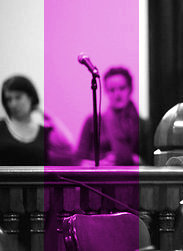Public gaps detailed
 Despite holding 57 per cent of all public sector roles, only one in five women hold the highest-paid positions.
Despite holding 57 per cent of all public sector roles, only one in five women hold the highest-paid positions.
A recent survey conducted by the Workplace Gender Equality Agency and the Australian Public Service Commission highlights a significant gender pay gap within the sector, especially when including agencies such as the Reserve Bank, NBN, Australia Post, CSIRO, and the ABC, where the gap reaches 11.6 per cent.
Comparatively, the gap is 7.2 per cent within the core public service, based on total remuneration.
The survey sheds light on the underrepresentation of women in top leadership positions within the federal workforce.
Although women comprise 57 per cent of employees, they hold only 48 per cent of leadership roles. At the same time, women are overrepresented in lower-paid positions.
The study reveals that nearly one in three men (32.7 per cent) fall within the top earnings quartile, earning above $141,000, whereas only 19.4 per cent of women reach this quartile.
Conversely, in the lowest earning quartile, 28.7 per cent of women earn below $94,000, compared to 19.8 per cent of men.
Remarkably, the survey is the first comprehensive examination of the federal public sector, encompassing both the core public service and broader business agencies that voluntarily submitted data.
Commenting on the findings, WGEA director Mary Wooldridge says there are major structural gender segregation challenges faced by the government and businesses.
“How do we challenge highly feminised roles and attract more men into them?” she asks.
“There has been quite a bit of work on the other side, particularly STEM, but overall the feminised industries such as healthcare, social assistance and education have been the least likely to do things like pay gap analysis and take action as a result.
“They have rested on their laurels.
“They have a lot of [women] employed, but haven’t addressed the gender equality issues. I think the next real frontier of thinking and action is making feminised industries more gender equal.”
The report's release also underscores the cultural issues that must be addressed. It reveals that the proportion of men taking paid parental leave in the public sector is lower than expected, demonstrating persisting stigmas and stereotypes. Additionally, the survey shows that while more women (52.9 per cent) hold leadership positions overall, men are more likely to occupy senior leadership roles, including key management and general manager positions.
The report identifies the lack of flexibility in senior positions as a significant barrier. It suggests that offering leadership roles as full-time positions only discourages women from pursuing senior positions and emphasises the importance of adopting policies that promote work-life balance and do not reward ‘presenteeism’.
The survey concludes by highlighting the need to provide training for managers and non-managers on effectively working with flexible and remote or hybrid teams, presenting an opportunity for improvement.
While the federal government has made progress in reducing the gender pay gap, with an 11.6 per cent gap compared to the private sector's 22.8 per cent, further efforts are required to achieve gender equality in the federal public sector.
More details are accessible here.








 Print
Print